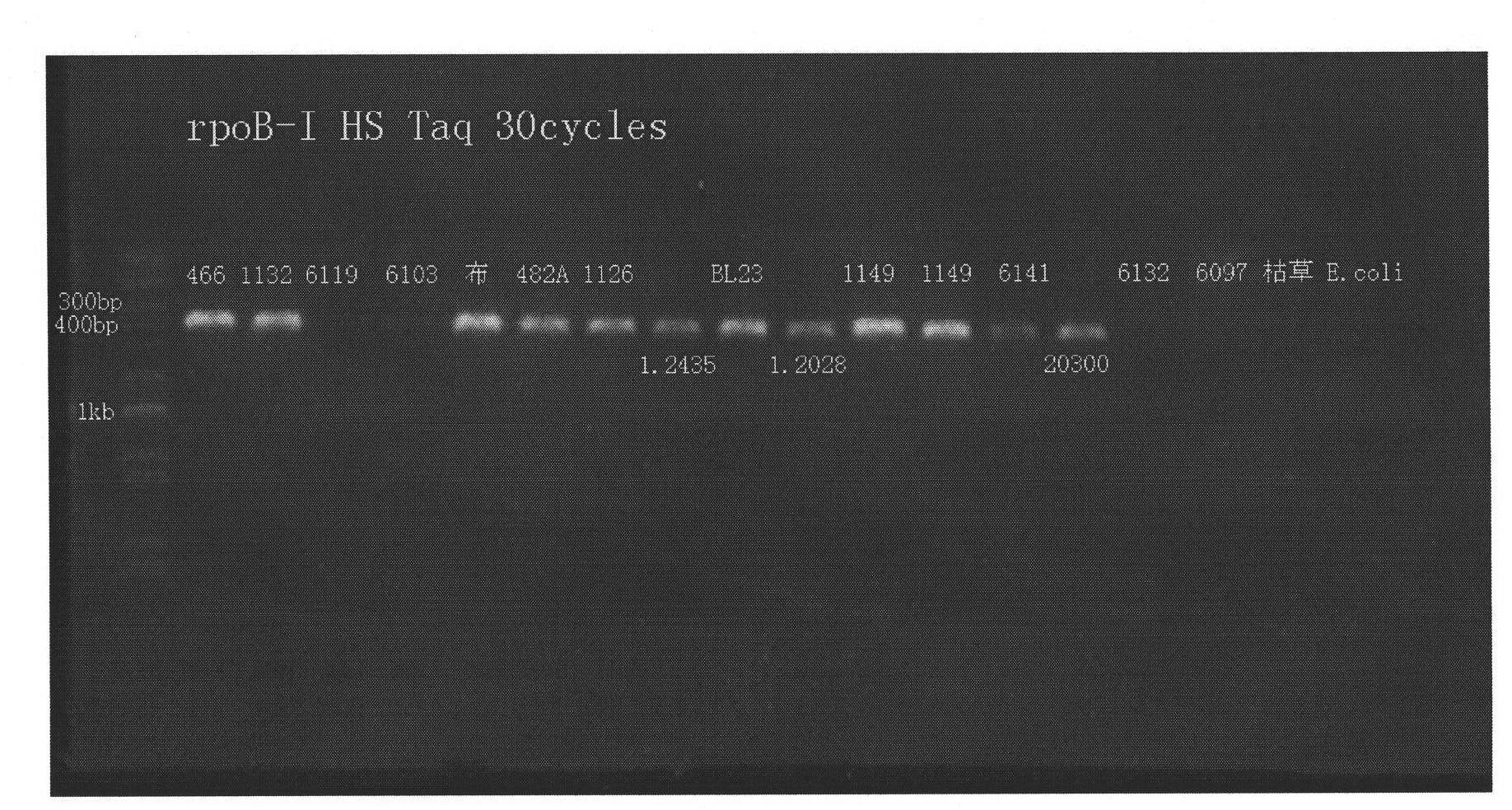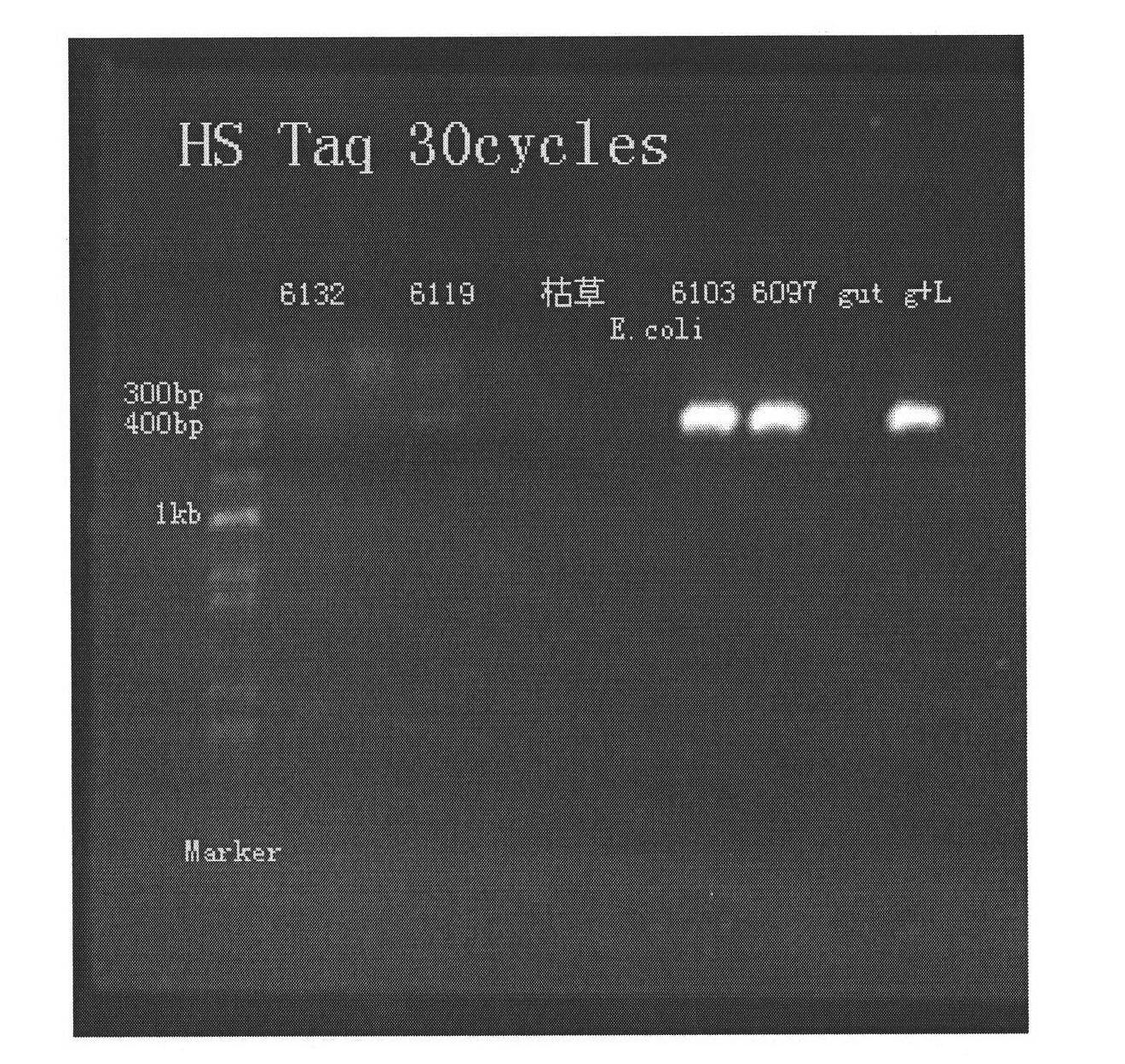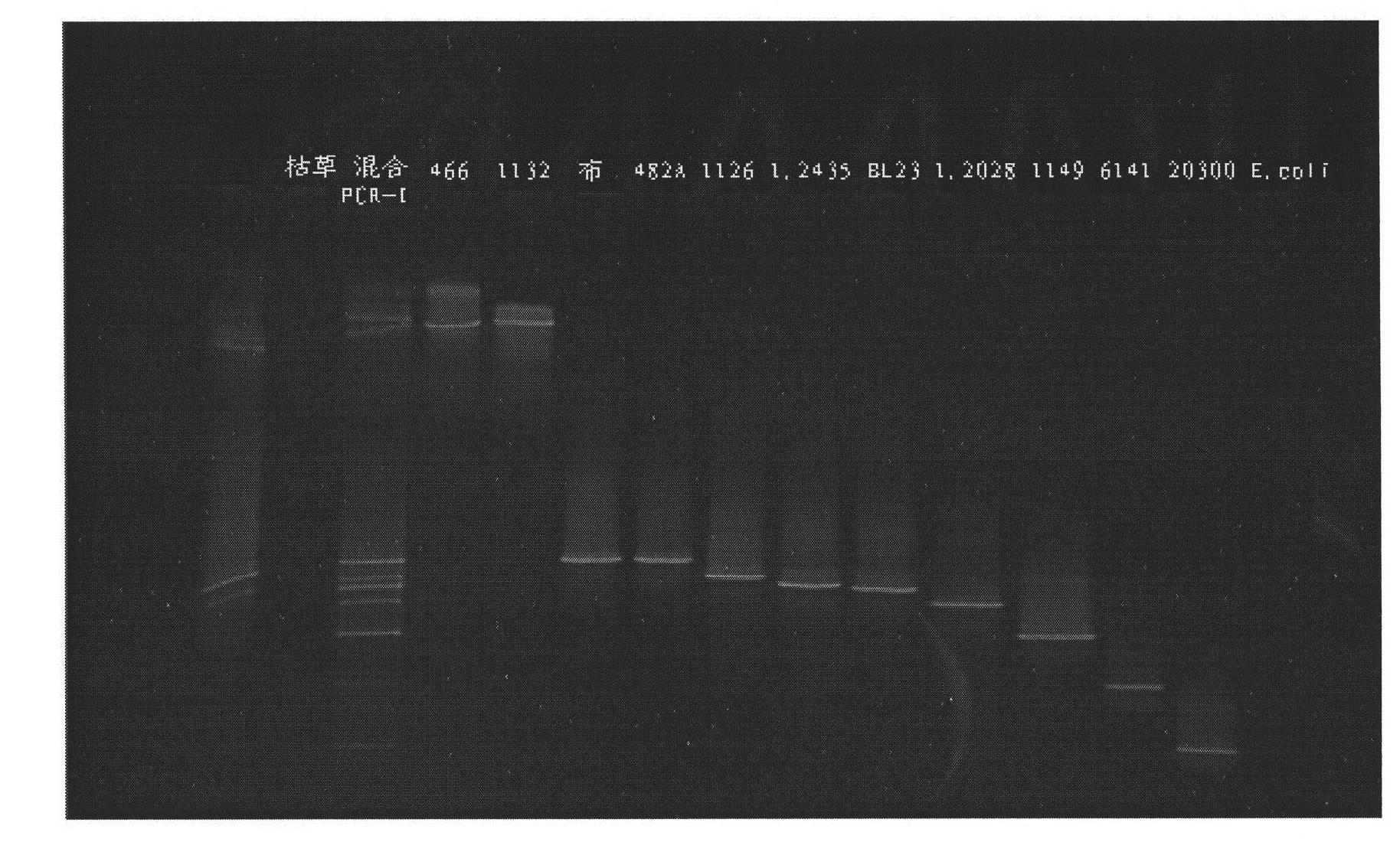Special primer for aided-identifying strains of lactobacillus and application thereof
A Lactobacillus genus, milk identification technology, applied in the determination/inspection of microorganisms, biochemical equipment and methods, DNA/RNA fragments, etc., can solve the problems of high labor intensity and long time consumption
- Summary
- Abstract
- Description
- Claims
- Application Information
AI Technical Summary
Problems solved by technology
Method used
Image
Examples
Embodiment 1
[0024] Embodiment 1, the acquisition of specific primer pair
[0025] The RNA polymerase β subunit is encoded by the rpoB gene, which has RNA polymerase activity and catalyzes the synthesis of RNA. The rpoB gene of most bacteria is highly conserved and is a single copy (Kapur, V., Li, L., Iordanescu, S., Hamrick, M., Wanger, A., Kreiswirth, B., Musser, J., 1994 .Characterizationby automated DNA sequencing of mutations in the gene(rpoB)encoding the RNApolymerase beta subunit in rifampin-resistant Mycobacterium tuberculosis strains from New York City and Texas.Journal of Clinical Microbiology.32,1095-1098.).
[0026]According to L. brevis CGMCC 1.2028 (NC_008497.1), L. casei CGMCC 1.2435 (NC_008526.1), L. casei BL23 (NC_010999.1), L. acidophilus NCFM (NC_006814.1), L. acidophilus ATCC 4796 (000) , ACHN L.plantarum subsp.plantarum JCM1149(NZ_ACGZ00000000),L.rhamnosus GG(NC_013198),L.helveticus DSM 20075(NZ_ACLM00000000),Lactobacillus johnsonii ATCC 33200(NZ_ACGR00000000),L.crisp...
Embodiment 2
[0029] Embodiment 2, the application of special primers in the identification of Lactobacillus strains
[0030] After starvation for 1 week, zebrafish were fed with common pellets for 3 days, and fish species with the same size (body weight 0.19±0.02g) were selected for the experiment.
[0031] 1. Sample preparation
[0032] 17 experimental strains:
[0033] Lactobacillus brevis CGMCC 1.2028; (1.2028);
[0034] Lactobacillus casei subspecies (Lactobacillus casei) CGMCC 1.2435; (1.2435);
[0035] Lactobacillus casei subspecies (Lactobacillus casei) ATCC 393, namely Lactobacillus casei BL23; (BL23);
[0036] Lactobacillus delbrueckii subsp. bulgaricus CICC 6103; (6103);
[0037] Lactobacillus delbrueckii subsp. bulgaricus CICC 6097; (6097);
[0038] Lactobacillus reuteri (Lactobacillus reuteri) CICC 6132; (6132);
[0039] Lactobacillus reuteri (Lactobacillus reuteri) CICC 6119; (6119);
[0040] Lactobacillus acidophilus JCM1132; (1132)
[0041] Lactobacillus plantarum su...
Embodiment 3
[0092] Example 3. Application of special primers to identify the colonization of Lactobacillus strains in the zebrafish intestine
[0093] 1. Preparation of PBS and bacterial agent feed
[0094] PBS buffer (pH7.4) formula:
[0095] NaCl 8g
[0096] KCl0.2g
[0097] Na 2 HPO 4 1.42g
[0098] K H 2 PO 4 0.27g
[0099] Add water to dissolve, dilute to 1L, sterilize, store at room temperature
[0100] Preparation of "PBS pellets": Spray 100ml of PBS buffer evenly on 100g of ordinary pellets, and air-dry at 20°C.
[0101] Preparation of "LAB granules": Centrifuge 15 kinds of lactic acid bacteria, collect bacteria, resuspend in PBS, centrifuge, wash twice, evenly spray on 100g of ordinary granules, dry at 20°C, each concentration of lactic acid bacteria About 6×10 7 cells / gram of feed.
[0102] 2. Group feeding
[0103] After starvation for 1 week, zebrafish were fed with common pellets for 3 days, and fish species with the same size (body weight 0.19±0.02g) were...
PUM
 Login to View More
Login to View More Abstract
Description
Claims
Application Information
 Login to View More
Login to View More - R&D
- Intellectual Property
- Life Sciences
- Materials
- Tech Scout
- Unparalleled Data Quality
- Higher Quality Content
- 60% Fewer Hallucinations
Browse by: Latest US Patents, China's latest patents, Technical Efficacy Thesaurus, Application Domain, Technology Topic, Popular Technical Reports.
© 2025 PatSnap. All rights reserved.Legal|Privacy policy|Modern Slavery Act Transparency Statement|Sitemap|About US| Contact US: help@patsnap.com



